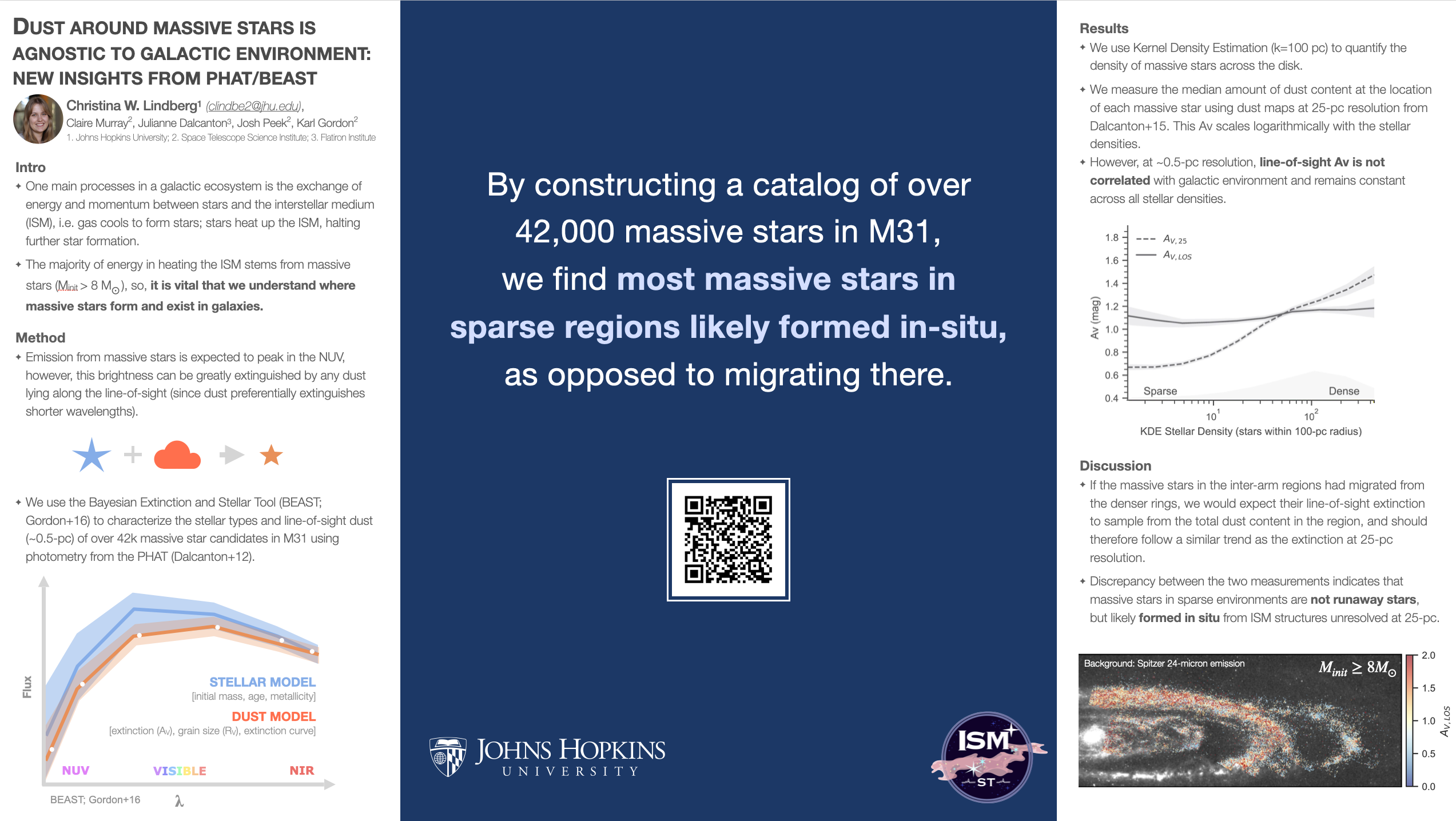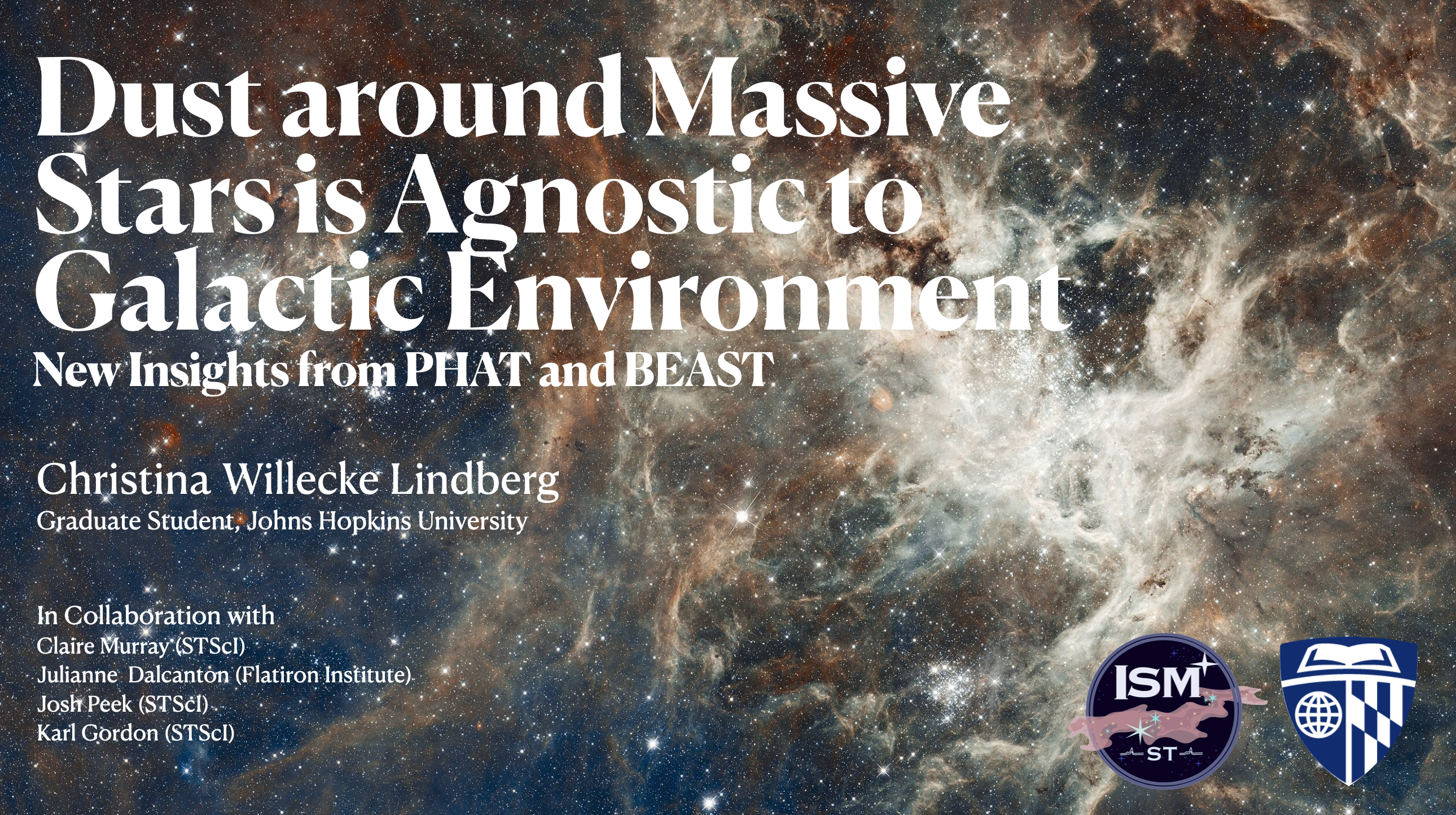
Massive Stars and the ISM in M31
To understand the interplay of energy and momentum between massive stars and the ISM, we have to know where massive stars are located. We used photometry from the Panchromatic Hubble Andromeda Treasury (PHAT), characterized by the Bayesian Extinction and Stellar Tool (BEAST) to look for main-sequence massive star candidates across 1/3 of the disk of M31. In doing so, we managed to produce a catalog of +40,000 candidate stars with stellar and line-of-sight extinction fits, which can be downloaded here. We found that massive stars have, on average, the same amount of extinction regarless of their environment, indicating that dust around massive stars is agnostic to galactic environment. Read the paper here!






